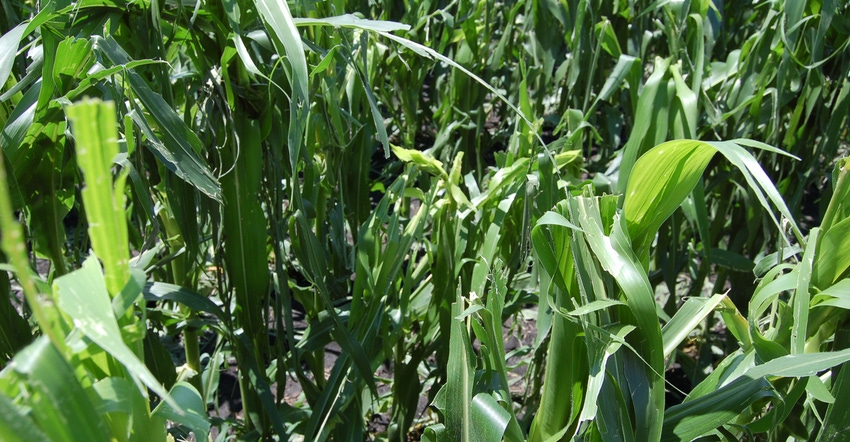
“From the National Weather Service … a severe thunderstorm capable of producing golf ball-size hail was just reported 20 miles west of Greencastle. The storm should arrive at Greencastle at 9:15 p.m., at Danville by 9:30 p.m. and at Lebanon by 9:50 p.m. If you are in the path of this storm, take cover on the lowest floor of your house, away from windows.”
If there is anything that gets your blood pumping, a report like that could be it. Suppose you’re in the path of that storm, and a couple of cornfields are hit in the pretassel stage. Leaves are shredded and a few stalks are bruised. You want to know how much yield loss to expect, and you want to know if it’s still worth applying late-season nitrogen and fungicide on those fields.
The panel of Indiana certified crop advisers addresses these questions. The panel includes Traci Bultemeier, accounts manager, DuPont Pioneer, Fort Wayne; Gene Flaningam, Flaningam Ag Consulting LLC, Vincennes; and Bryan Overstreet, Purdue University Extension ag educator, Jasper County.
Bultemeier: It’s important to wait to estimate damage to the field. In the case of hail, 10 days is the recommended time to wait before evaluating the stand. That’s an adequate amount of time to allow plants to start regrowth of new leaves. This will help evaluate if tissue is living or dead.
Flaningam: Yield loss from hail will be greatest at or near the tassel stage. For example, 50% defoliation at tassel produces an estimated 31% yield loss, while 50% defoliation at the eight-leaf stage only results in a 3% yield loss. Applying rescue nitrogen or fungicide will depend upon damage caused by the storm and the chance of getting any return on your additional investment.
Bultemeier: Pretassel corn is very vulnerable to hail damage, particularly from defoliation. So much energy is going into growth and ear determination at that point. Stalk bruising is a concern due to the risk of infection and standability, not so much direct yield effect. Yield losses can be large, but can be mitigated by good growing conditions the rest of the year. A drone may be of great value to assist in determining the amount of the field that was affected, and where scouting should take place.
Overstreet: If you lost 80% of leaf tissue, you could expect almost an 80% yield loss. You can find a chart with this information in the Purdue Corn & Soybean Field Guide or new Corn Field Scout app for cellphones. Depending on the severity of damage, I might consider a fungicide to minimize losses. But if the damage is too severe, I would cut my losses and live with what damage I have.
Bultemeier: Nitrogen should be applied accordingly to the results of the yield “guesstimate.” If the field is kept and disease is found, a fungicide should be applied if economics show at least breaking even. Fungicides will not control any issues resulting from stalk damage. Those are mainly bacterial in nature.
About the Author(s)
You May Also Like




